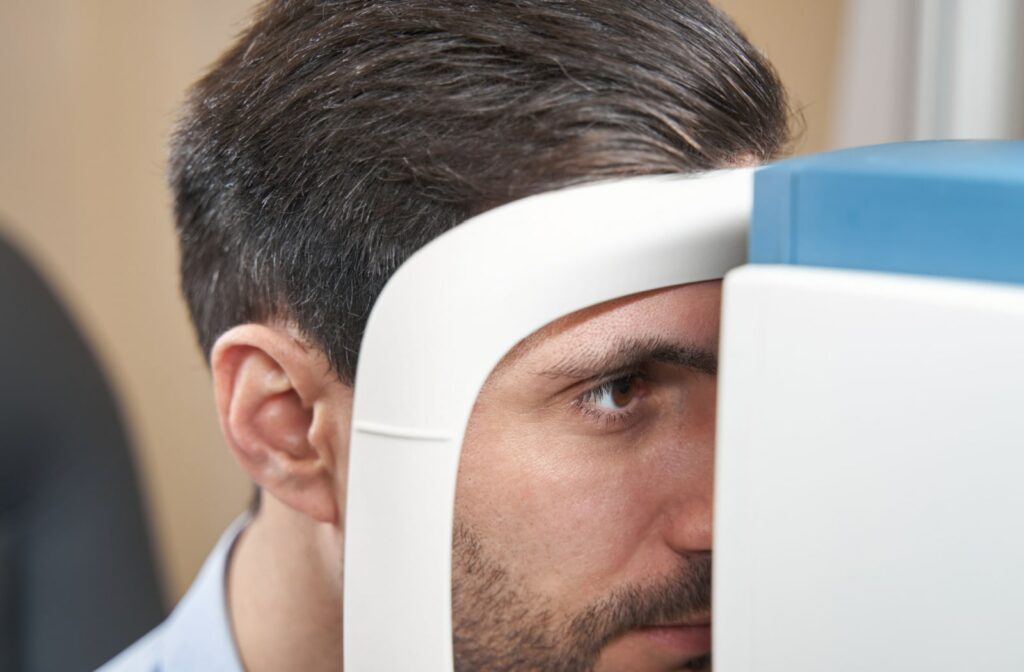All Categories
Featured
Table of Contents

Routine eye exams are essential for keeping good vision and detecting prospective eye wellness issues early. The frequency of these exams can vary considerably based on a person's age, way of living, and total health. Recognizing the recommended routine for eye examinations can aid make certain that individuals of all ages obtain ideal care and monitoring for their eye health.
Infants and Toddlers (0-2 Years)
For babies and toddlers, eye examinations are important for identifying any prospective vision troubles early on. The American Academy of Ophthalmology recommends that a kid's very first eye examination must happen at around six months of age. During this first check out, the eye care professional will assess the youngster's aesthetic advancement and check for any apparent eye problems.Following this first test, it is advised that kids have another eye examination at age 3. This check out will focus on analyzing the kid's general visual function, including eye placement and the capability to track items. If no concerns are spotted, the next exam ought to be scheduled before the child begins institution, normally around age 5 or six.
School-Aged Youngsters (6-18 Years)
Routine eye tests ought to be scheduled every one to 2 years when children get to school age. Vision is crucial for finding out and development, and numerous colleges perform vision screenings. These screenings do not replace a comprehensive eye test by an eye treatment professional.For children involved in sporting activities or tasks calling for substantial aesthetic emphasis, yearly eye exams may be advisable. Additionally, if a child exhibits signs of vision troubles-- such as difficulty checking out, squinting, or constant migraines-- a visit to the eye doctor ought to be arranged as quickly as possible.
Young Person (19-39 Years)
Young person commonly have fewer vision modifications than older age, but routine eye examinations continue to be vital. The general suggestion is to arrange an eye test every two years during this period. However, individuals with specific threat variables-- such as a household background of eye condition, diabetic issues, or those that put on call lenses-- must take into consideration yearly eye examinations.In addition, those that spend substantial time on digital gadgets might experience digital eye pressure. If signs and symptoms such as dry skin, fatigue, or obscured vision take place, it may be smart to see an eye care expert sooner.
Adults (40-64 Years)
As individuals enter midlife, the chance of developing vision issues boosts. Adults aged 40 to 64 need to schedule eye examinations each to two years. This age group might begin to experience presbyopia, a natural age-related condition that makes it challenging to concentrate on close objects. Eye tests can additionally aid identify various other usual age-related conditions such as glaucoma, cataracts, and macular degeneration.If people in this age team have threat variables such as high blood stress or diabetes, they might call for even more constant examinations to monitor their eye health and wellness very closely.
Senior Citizens (65 Years and Older)
For elders, normal eye exams end up being even extra essential. The American Optometric Organization recommends that people aged 65 and older have an eye exam at least when a year.Conclusion.
Comprehending the proper timetable for eye examinations based on age is important for maintaining optimal eye health and wellness throughout life. By sticking to these standards and seeking advice from with an eye care expert, people can take aggressive actions towards protecting their vision and general wellness.Table of Contents
Latest Posts
Environmental Practices in Local Car Repair Work Companies: Decreasing the Carbon Footprint
Published Nov 23, 24
0 min read
The Future of Vision Correction: How Technology is Paving the Means for Better Solutions
Published Nov 23, 24
0 min read
Just How to Identify the most effective Car Repair Service Shops via Evaluations and rankings
Published Nov 22, 24
0 min read
More
Latest Posts
Environmental Practices in Local Car Repair Work Companies: Decreasing the Carbon Footprint
Published Nov 23, 24
0 min read
The Future of Vision Correction: How Technology is Paving the Means for Better Solutions
Published Nov 23, 24
0 min read
Just How to Identify the most effective Car Repair Service Shops via Evaluations and rankings
Published Nov 22, 24
0 min read